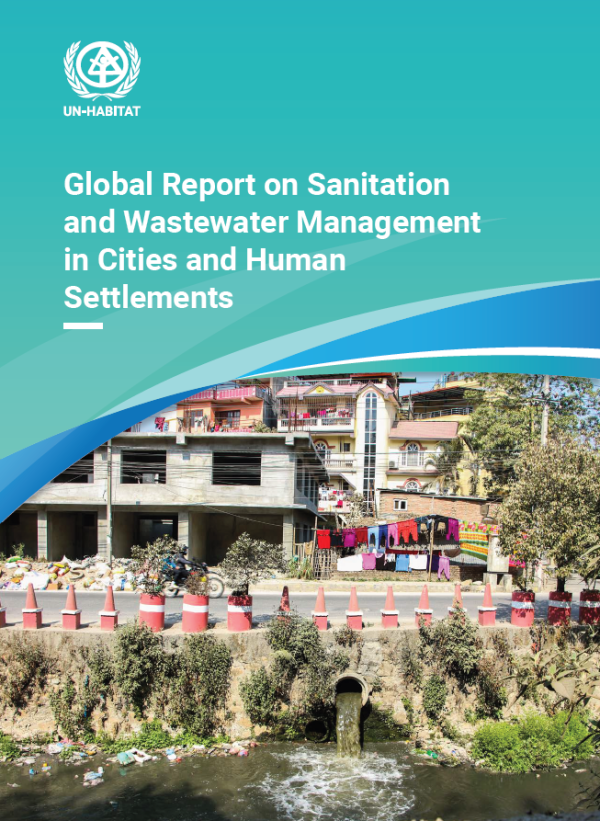Workshop Held on Retro-maintenance Assessment Toolkits for School and Hospital Safety

Kathmandu, December 18, 2013 — A Workshop on Retro-maintenance Assessment Toolkits for School and Hospital Safety was held in the capital Kathmandu to disseminate the findings of the Multi-hazards Retro-maintenance Assessment Toolkitsof Schools and Hospitals on Wednesday. The Toolkits for School and Hospital Safety was developed by UN-Habitat in partnership with UNISDR and South Asian Association for Regional Cooperation (SAARC) to facilitate the assessment of the safety of critical infrastructures, focusing on schools and hospitals in South Asia. Speaking during the inaugural session, Moria Reddick , Coordinator at Nepal Risk Reduction Consortium (NRRC) hailed the importance of for the assessment of the schools and hospital buildings. “We still need to work together to find a way in truly institutionalizing hospital and school safety. This means ensuring that all schools and hospitals, public or private; new or old, are disaster safe. However, the gap remains quite large. This is where I hope and see the assessment toolkit playing an important role,” Reddick said. She added, “toolkit can support efforts for raising awareness and assessing for safety and push forward the agenda of resilience in schools and hospitals.” “The issue of school and hospital safety is a flagship priority for the NRRC and I believe that this toolkit will go a long way in supporting Flagship 1 partners in our collective effort in promoting disaster resilient schools and hospitals and I am thankful to the government, UN-Habitat and all those involved in the development of this toolkit,” she added. Also speaking in the program, Dr. Lava Deo Awasthi, Director General of Department of Education said that the toolkit should be user friendly and it should increase the interest of everyone to assess the degree and intensity of risk. “The work of UN-Habitat for the development of this kind of toolkit is really praiseworthy as it has come up with a very nice message that urges to find out the risk and suggest us to diagnose the risk,” Awasthi said. Dr. Awasthi futher said that “Ministry of Education expresses its full commitment for this novel work as for it is very much important for our future at large and particularly focusing for the patient’s and student’s welfare”. “This kind of toolkit needs a collective intervention and advocacy as well as the local intervention and it should be taken to various places, many schools and hospitals for risk reduction,” he added. Chairperson of the event and Deputy Director General from Department of Urban Development and Building Construction (DUDBC) Sunil Kumar Karna said that Nepal remains at high risk of natural disasters as the toolkit will prove to be a milestone in assessing the disaster risk of schools and hospital buildings. “DUBDC expresses full commitment on this regard,” he added. Habitat Program Manager, Mr. Padma Sundar Joshi made a presentation on Retro-maintenance Assessment Toolkits for School and Hospital Safety. Similarly, a presentation was made on status of Hospital buildings based on Retro-maintenance Assessment by Mr. Sagar K. Joshi, Senior Division Engineer, DUDBC. From Department of Education Jhapper Sing Vishokarma, Senior Divisional Engineer gave presentation of school safety program and toolkit from DoE. Likewise, presentation on status of schools building based on Retro-maintenance Assessment by Dr. Santosh Shrestha from UN-Habitat. As we know Nepal is prone to multiple disasters as every year the country succumbs to flood, fire, landslides and cold fronts along with the high risk of earthquake. In this context one of the major challenges is to protect social infrastructures like schools and hospitals for the sake of that this Toolkit has been developed. Initially the toolkit was tested in two public schools of Lalitpur and also in Bhaktapur Hospital. Likewise these toolkits have been tested in Pakistan and India. Incorporating feedbacks from field testing and test data, the Toolkits books (with CDROM) have been activeed and launched on 15th Earthquake Day by Secretary of Minstry Of Urban Development Mr Kishor Thapa. After the launch of the toolkit, it has been tested in 42 school buildings of 12 public schools of Kritipur and three hospitals of Kathmandu. Most of the buildings at Kritipur were constructed more than 20 years ago and are built by traditional artisans without any input from an engineer. Both the assessment showed that buildings are vulnerable to either earthquake or fire or both. The study shows that there is an urgent need to retrofit of most buildings for protection. In addition there is also a need regular repair and maintenance. The program was attended by members from Department of Urban Development and Building Construction, Department of Education, Ministry of Health and Population and different stakeholders from national and international organizations, engineers and engineering students




